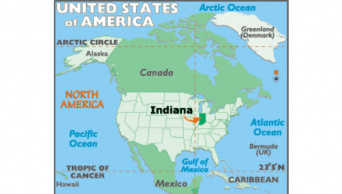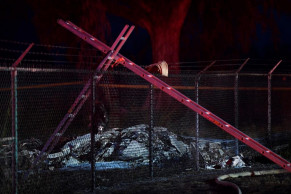usa
Trump suggests other countries pay US for protecting tankers
Washington, Jun 24 (AP/UNB) — President Donald Trump is suggesting the United States should not protect ships in the strategic Strait of Hormuz without compensation from other countries.
In Mideast, Pompeo seeks a global coalition against Iran
Washington, Jun 24 (AP/UNB) — Secretary of State Mike Pompeo said Sunday he wants to build a global coalition against Iran during urgent consultations in the Middle East, following a week of crisis that saw the United States pull back from the brink of a military strike on Iran.
Trump: 'Surprise' question about Pence led him to hesitate
Washington, Jun 24 (AP/UNB) — President Donald Trump says he hesitated to back a possible 2024 presidential run by Vice President Mike Pence because he was caught off-guard by the question. Given a chance at a do-over, however, Trump still did not endorse his loyal lieutenant.
1 killed, multiple injured in Indiana bar shooting
Chicago, June 23 (Xinhua/UNB) -- One person was killed and as many as 10 others were injured in a shooting at a bar on early Sunday in South Bend, a city in the U.S. state of Indiana, according to the local police.
Iran to be hit with new sanctions on Monday: Trump
Washington, Jun 23 (AP/UNB) — President Donald Trump said Saturday that military action against Iran was still an option for its downing of an unmanned US military aircraft, but amid heightened tensions he dangled the prospect of eventually becoming an unlikely "best friend" of America's longtime Middle Eastern adversary.
7 dead in collision with several motorcycles, pickup truck
New Hampshire, Jun 22 (AP/UNB) - Several motorcycles and a pickup truck collided on a rural, two-lane highway Friday, killing seven people and injuring three others, and sending onlookers rushing to treat and help the motorists peppered along the road.
Trump warns Iran of ‘obliteration’ in event of war
Dhaka, Jun 22 (UNB) - President Trump has said he does not want war but warned Iran it would face "obliteration" if conflict broke out, reports the BBC.
Trump faces new sexual assault allegation; he issues denial
Washington, Jun 22 (AP/UNB) — A New York-based advice columnist claims Donald Trump sexually assaulted her in a dressing room at a Manhattan department store in the mid-1990s, according to a first-person account published Friday by New York magazine.
Trump says he's in 'no hurry' to strike Iran
Washington , Jun 22 (AP/UNB) — President Donald Trump says he abruptly called off the military strikes on Iran Thursday because the likely deaths of 150 Iranians would have been out of proportion to the shootdown of an unmanned American surveillance drone.
Fiery plane crash claims 9 people on Oahu's North Shore
Honolulu, Jun 22 (AP/UNB) — Authorities in Hawaii are investigating after nine people were killed in a small plane crash.



















